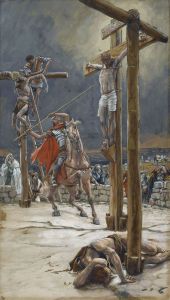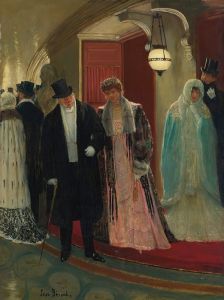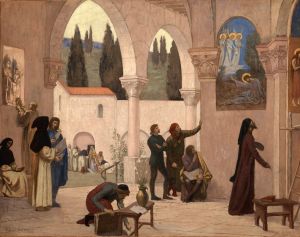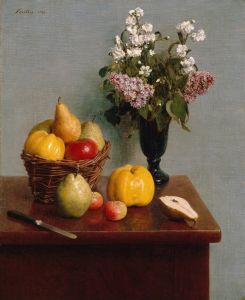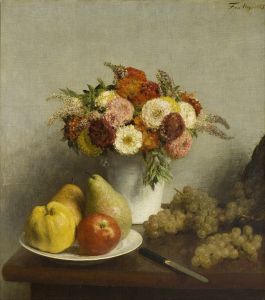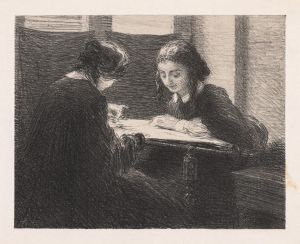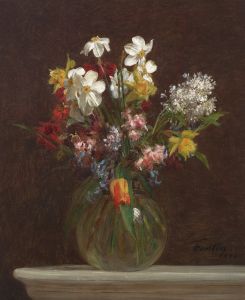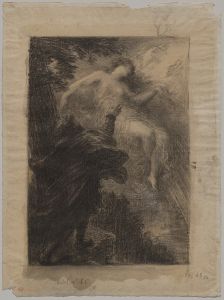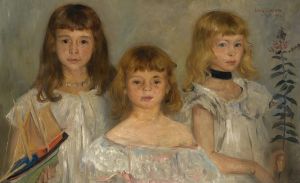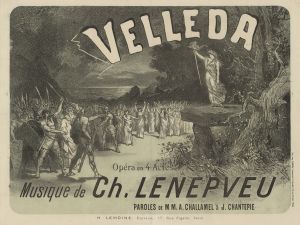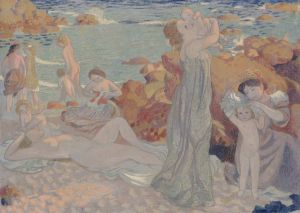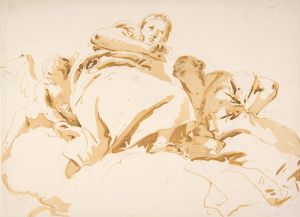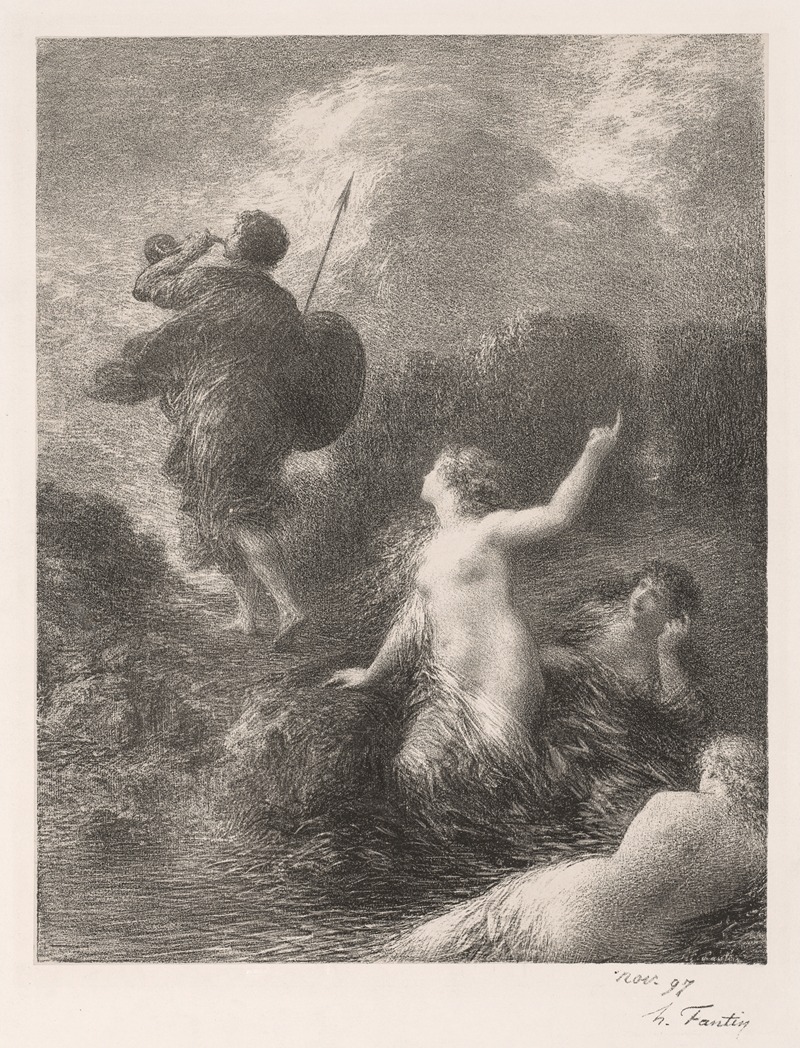
Goetterdaemmerung; Siegfried et les filles
A hand-painted replica of Henri Fantin-Latour’s masterpiece Goetterdaemmerung; Siegfried et les filles, meticulously crafted by professional artists to capture the true essence of the original. Each piece is created with museum-quality canvas and rare mineral pigments, carefully painted by experienced artists with delicate brushstrokes and rich, layered colors to perfectly recreate the texture of the original artwork. Unlike machine-printed reproductions, this hand-painted version brings the painting to life, infused with the artist’s emotions and skill in every stroke. Whether for personal collection or home decoration, it instantly elevates the artistic atmosphere of any space.
Henri Fantin-Latour, a renowned French painter known for his still lifes and group portraits, created the painting "Goetterdaemmerung; Siegfried et les filles" in 1875. This work is part of Fantin-Latour's exploration of themes from Richard Wagner's operas, which were a significant influence on the artist. Fantin-Latour was deeply inspired by Wagner's music and often sought to capture the dramatic and emotional intensity of the operas in his paintings.
"Goetterdaemmerung; Siegfried et les filles" is directly inspired by Wagner's "Götterdämmerung," the last opera in the composer’s epic four-part cycle, "Der Ring des Nibelungen." The opera, which translates to "Twilight of the Gods," is a complex narrative that weaves together themes of heroism, betrayal, and the downfall of gods and men. Fantin-Latour's painting reflects these themes by focusing on the character of Siegfried, a central figure in the opera, and his interactions with the Rhinemaidens, mythical water nymphs who play a pivotal role in the story.
In the painting, Fantin-Latour employs a romantic and somewhat mystical style, characteristic of his work during this period. The composition likely features Siegfried surrounded by the Rhinemaidens, capturing a moment of interaction that is both intimate and charged with the impending tragedy of the narrative. Fantin-Latour's use of light and shadow, along with his attention to detail, creates an atmosphere that mirrors the dramatic tension of Wagner's music.
Fantin-Latour's fascination with Wagner was not limited to "Götterdämmerung." Throughout his career, he produced several works inspired by the composer, including paintings and lithographs that depicted scenes from other operas in the Ring Cycle, as well as from "Tannhäuser" and "Lohengrin." His dedication to Wagnerian themes was part of a broader 19th-century trend where many artists and intellectuals were captivated by the German composer's revolutionary approach to opera and his ability to blend music, drama, and mythology.
The painting "Goetterdaemmerung; Siegfried et les filles" is a testament to Fantin-Latour's ability to translate musical and theatrical inspiration into visual art. It reflects his skill in capturing the essence of Wagner's operas, not just in terms of narrative content but also in the emotional and atmospheric qualities that make Wagner's work so compelling. Fantin-Latour's works, including this painting, are celebrated for their ability to convey the depth and complexity of their subjects, making them enduring pieces in the history of art.
Today, Henri Fantin-Latour's paintings, including those inspired by Wagner, are held in high regard and can be found in various museums and private collections around the world. His unique ability to blend music and visual art continues to be appreciated by art enthusiasts and scholars alike, ensuring his place in the pantheon of great 19th-century artists.





